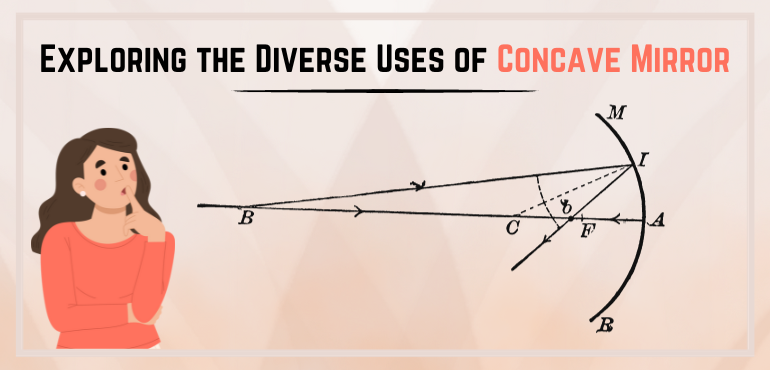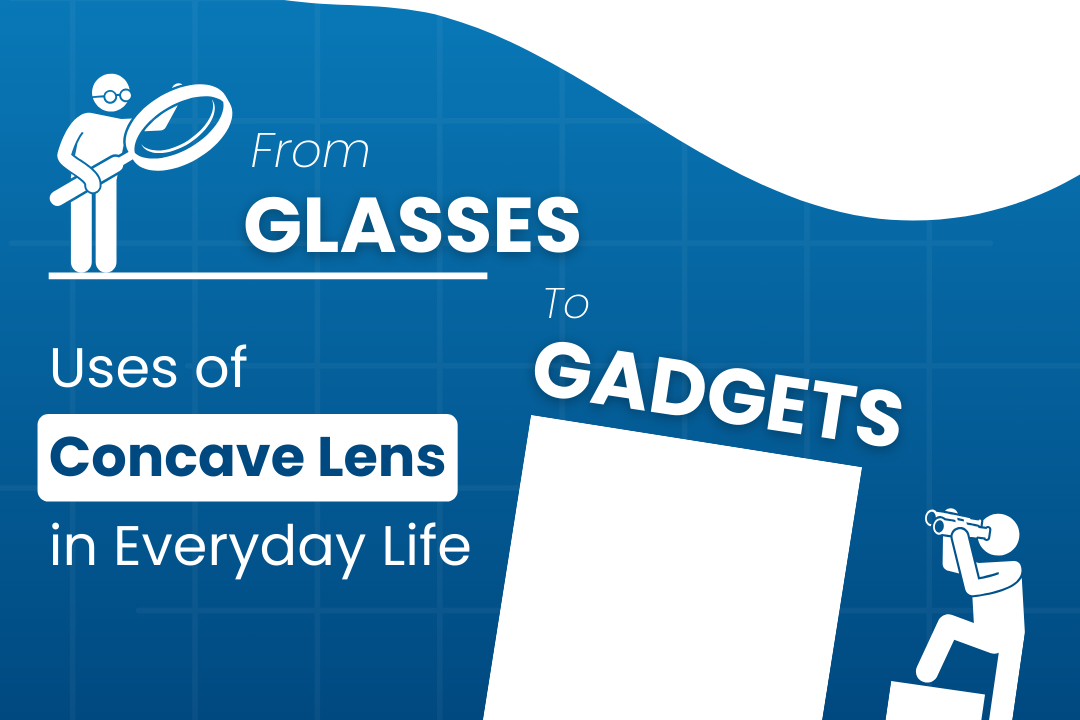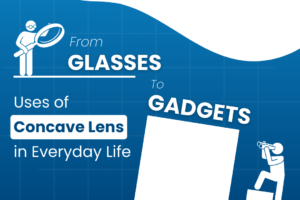
The world of optics is vast and intriguing, with mirrors playing a pivotal role in shaping our understanding of light. The concave mirror stands out for its unique properties and diverse applications among the various mirror types. In this comprehensive exploration, we delve into the definition, types, and importance of concave mirrors, highlighting how concave and convex mirrors are different. Additionally, lenses and mirrors are different, with each having distinct roles and applications in the field of optics.
Defining Concave Mirrors
A concave mirror is a reflective surface that curves inward, resembling the interior of a sphere. This curvature gives rise to distinct reflective properties, distinguishing it from its counterpart, a convex mirror. The primary defining feature of a concave mirror is its ability to converge light rays that strike its surface. This convergence results in a focal point—the point where parallel rays either meet or appear to diverge from.
Types of Concave Mirrors
Concave mirrors can be categorized based on the degree of curvature:
Concave Spherical Mirrors:
These mirrors maintain a spherical curvature, with the reflective surface forming a segment of a sphere. The extent of curvature influences the mirror’s reflective properties, affecting the focal length and image formation.
Parabolic Mirrors:
While parabolic mirrors share the concave curvature, they specifically adopt a parabolic shape. This departure from spherical curvature allows for improved focus and light-gathering capabilities, making them integral in applications like telescopes and satellite dishes.
Applications of Concave Mirrors
Optical Instruments:
- Telescopes: Concave mirrors find extensive use in reflecting telescopes. Their ability to converge light to a focal point enhances image clarity, making them a preferred choice in astronomical observations.
- Microscopes: In microscopy, concave mirrors serve to focus light onto the specimen. This focused illumination enhances visibility and aids researchers in studying minute details.
Medical Imaging:
- Dental Mirrors: Dentists use concave mirrors to gain better access and visibility during dental procedures. These mirrors help reflect light into the oral cavity, allowing for precise examination and treatment.
- Endoscopes: Medical endoscopes utilize concave mirrors to redirect light, enabling physicians to visualize internal organs and tissues during minimally invasive procedures.
Automotive Industry:
- Headlights: Some automotive headlights incorporate concave mirrors to control and focus the beam of light. This ensures optimal visibility for drivers while minimizing glare for oncoming traffic.
- Rearview Mirrors: Concave mirrors in rearview mirrors help widen the field of view, reducing blind spots and enhancing overall safety.
Solar Energy:
- Solar Concentrators: Concave mirrors play a crucial role in solar concentrators, which focus sunlight onto a small area. This concentrated solar energy can then be used for heating or to generate electricity in solar power plants.
Entertainment and Art:
- Spotlights: The entertainment industry employs concave mirrors in spotlights to control and direct the intensity of light. This is essential for creating dramatic effects on stage or in film production.
- Concave Mirrors in Art Installations: Artists often incorporate concave mirrors in installations to manipulate and reflect light creatively, adding a dynamic element to their works.
Importance of Concave Mirrors
Scientific Advancements:
Concave mirrors have been instrumental in advancing our understanding of the universe. From Galileo’s groundbreaking observations with the telescope to modern-day astronomical research, these mirrors continue to be indispensable tools in scientific exploration.
Technological Innovation:
- Communication Satellites: Parabolic concave mirrors are commonly used in satellite dishes to focus radio signals. This technology underpins modern communication networks, enabling global connectivity.
- Lasers: In laser systems, concave mirrors help amplify and focus the laser beam. This is fundamental in various applications, including medical procedures, communication, and industrial processes.
Medical Breakthroughs:
Medical diagnostics and treatments have evolved with the integration of concave mirrors. The precision offered by these mirrors enhances the accuracy of medical imaging techniques, leading to better patient outcomes.
Renewable Energy:
As the world seeks sustainable energy solutions, concave mirrors contribute to the harnessing of solar power. Solar concentrators equipped with these mirrors play a role in expanding the use of clean and renewable energy sources.
Conclusion:
Concave mirrors, with their unique reflective properties, continue to illuminate our path in various fields. From unraveling the mysteries of the cosmos to enhancing medical diagnostics and powering our world sustainably, the applications of concave mirrors are both diverse and profound. As technology advances and our understanding of optics deepens, these mirrors will likely play an even more pivotal role in shaping the future of science, technology, and innovation. In essence, concave mirrors are not just reflective surfaces; they are windows into a world of endless possibilities and discoveries.








